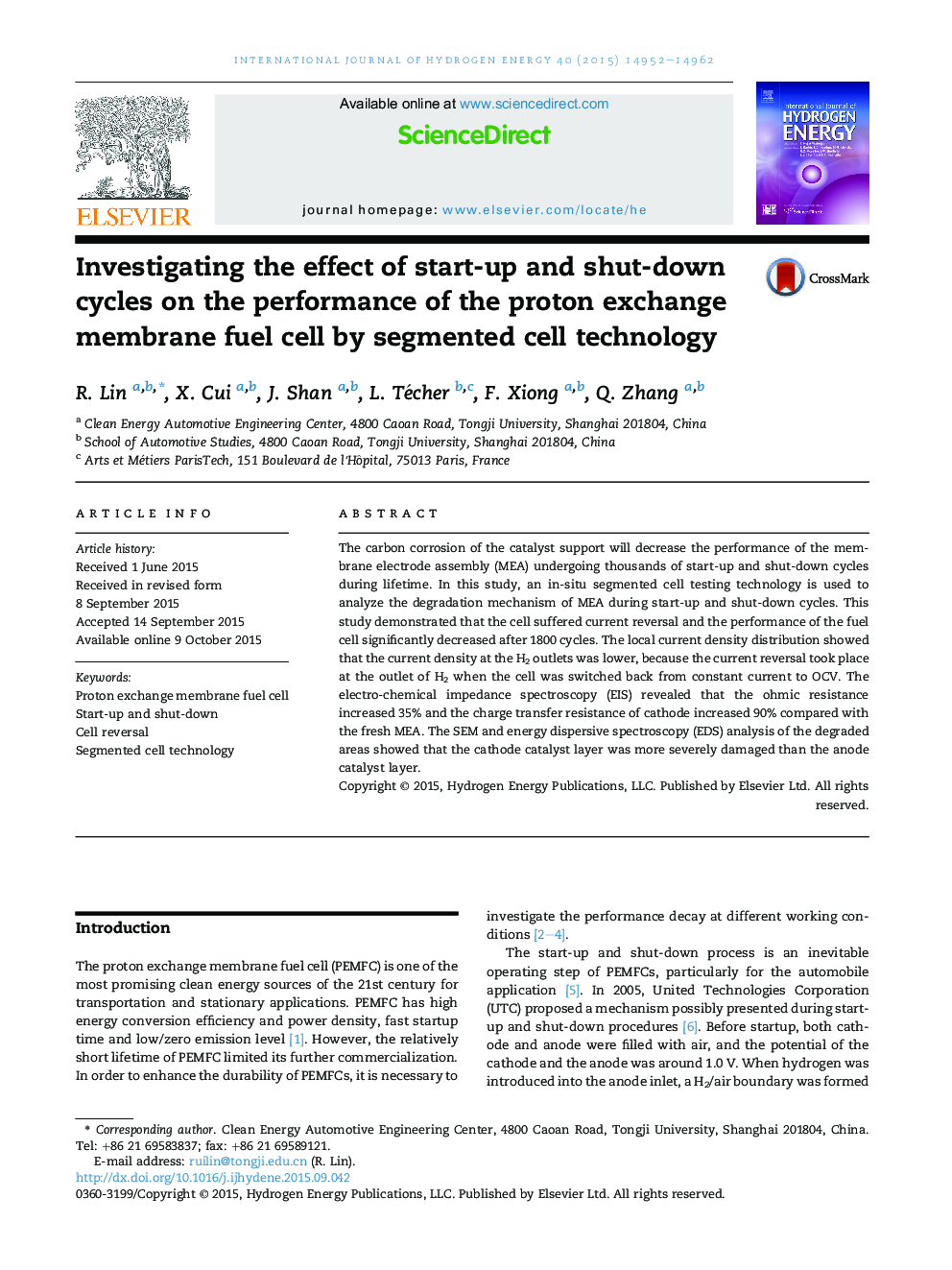| Article ID | Journal | Published Year | Pages | File Type |
|---|---|---|---|---|
| 1274265 | International Journal of Hydrogen Energy | 2015 | 11 Pages |
•Segmented fuel cell was used to record the local changes of the current density.•The cell current reversal was demonstrated and the cell performance significantly decreased.•The cell reversal would take place at the outlet of H2 when the cell was switched back to OCV.•The catalyst layer was degradation after start-up and shut-down cycles.
The carbon corrosion of the catalyst support will decrease the performance of the membrane electrode assembly (MEA) undergoing thousands of start-up and shut-down cycles during lifetime. In this study, an in-situ segmented cell testing technology is used to analyze the degradation mechanism of MEA during start-up and shut-down cycles. This study demonstrated that the cell suffered current reversal and the performance of the fuel cell significantly decreased after 1800 cycles. The local current density distribution showed that the current density at the H2 outlets was lower, because the current reversal took place at the outlet of H2 when the cell was switched back from constant current to OCV. The electro-chemical impedance spectroscopy (EIS) revealed that the ohmic resistance increased 35% and the charge transfer resistance of cathode increased 90% compared with the fresh MEA. The SEM and energy dispersive spectroscopy (EDS) analysis of the degraded areas showed that the cathode catalyst layer was more severely damaged than the anode catalyst layer.
